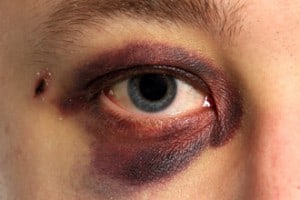
It is not uncommon for eyes to be involved by blunt or penetrating trauma due to various reasons. Surgical treatment of ocular trauma during its office hours only.
Treatment of ocular trauma
It is not uncommon for eyes to be involved by blunt or penetrating trauma due to various reasons. Acuity Eye Centre offers medical and surgical treatment of ocular trauma during its office hours only.
What should be done after an Ocular Injury?
For Chemical Exposure
- Don’t rub eyes.
Immediately wash out the eye with lots of water. Use whatever is closest — water fountain, shower, garden hose.
Get medical help while you are doing this, or after 15 to 20 minutes of continuous flushing
Don’t bandage the eye.
For a Blow to the Eye
Apply a cold compress, but don’t put pressure on the eye.
Take over-the-counter acetaminophen (Tylenol) or ibuprofen (Advil, Motrin) for pain.
If there is bruising, bleeding, change in vision, or it hurts when your eye moves, see a doctor right away.
For a Foreign Particle in Eye
Don’t rub the eye.
Pull the upper lid down and blink repeatedly.
If the particle is still there, rinse with eyewash.
If rinsing doesn’t help, close eye, bandage it lightly and see a doctor.
Routine Irritations
(sand, dirt, and other foreign bodies on the eye surface)
Wash your hands thoroughly before touching the eyelids to examine or flush the eye.
Do not touch, press, or rub the eye itself, and do whatever you can to keep your child from touching it (a baby can be swaddled to prevent this).
Do not try to remove any foreign body except by flushing. Other methods can scratch the surface of the eye, especially the cornea.
Tilt your child’s head over a basin or sink with the affected eye down and gently pull down the lower lid. Encourage your child to open the eyes as wide as possible. For an infant or small child, it’s helpful to have a second person hold the child’s eyes open while you flush.
Gently pour a steady stream of lukewarm water (do not heat the water) from a pitcher or faucet over the eye.
Flush for up to 15 minutes, checking the eye every 5 minutes to see if the foreign body has been flushed out.
Because a particle can scratch the cornea and cause an infection, the eye should be examined by a doctor if irritation continues after flushing.
A foreign body that remains after flushing probably will require removal by a trained medical professional.
Embedded Foreign Body
(an object penetrates or enters the globe of the eye)
If an object, such as a piece of glass or metal, is sticking out of the eye, take the following steps:
Call for emergency medical help or bring the child to the emergency room.
Cover the affected eye with a small cup taped in place. The point is to keep all pressure off the eye.
Keep your child (and yourself) as calm and comfortable as possible until help arrives.
Black Eyes and Blunt Injuries
A black eye is often a minor injury. But this bruising also can be the result of a significant eye injury or head trauma. A visit to the doctor or an eye specialist might be needed to rule out serious injury, particularly if you’re not sure what caused the black eye.
For a black eye:
Apply cold compresses intermittently: 5 to 10 minutes on, 10 to 15 minutes off. If you use ice, make sure it’s covered with a towel or sock to protect the delicate skin on the eyelid.
Use cold compresses for 24 to 48 hours, then switch to applying warm compresses intermittently. This will help the body reabsorb the leakage of blood and may help reduce discolouration.
If the child is in pain, give acetaminophen — not aspirin or ibuprofen, which can increase bleeding.
Prop the child’s head with an extra pillow at night, and encourage him or her to sleep on the uninjured side of the face (pressure can increase swelling).
Call your doctor, who may recommend an in-depth evaluation to rule out damage to the eye. Call immediately if you see any of these problems:
increased redness
drainage from the eye
lasting eye pain
any changes in vision
any visible abnormality of the eyeball
visible bleeding on the white part (sclera) of the eye, especially near the cornea
If the injury happened during one of your child’s routine activities, such as a sport, follow up by investing in an ounce of prevention — protective goggles or unbreakable glasses are vitally important.

